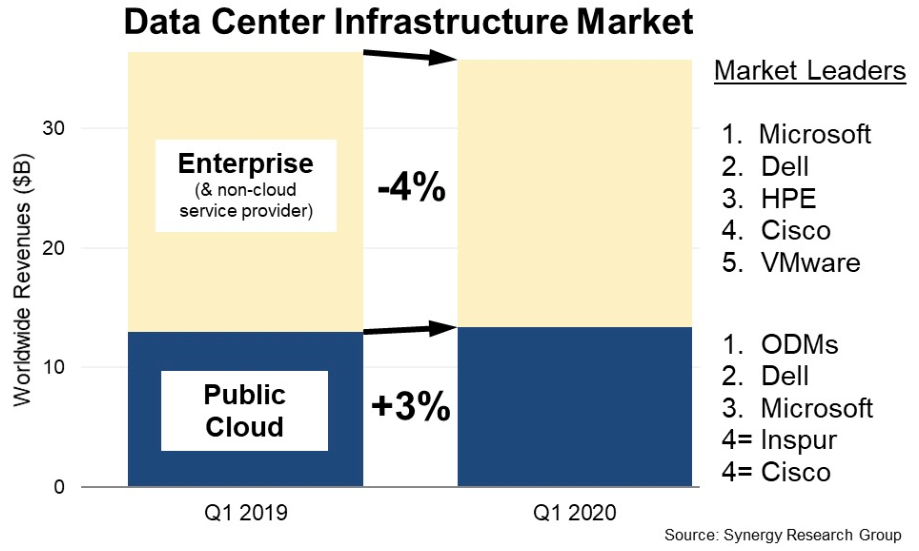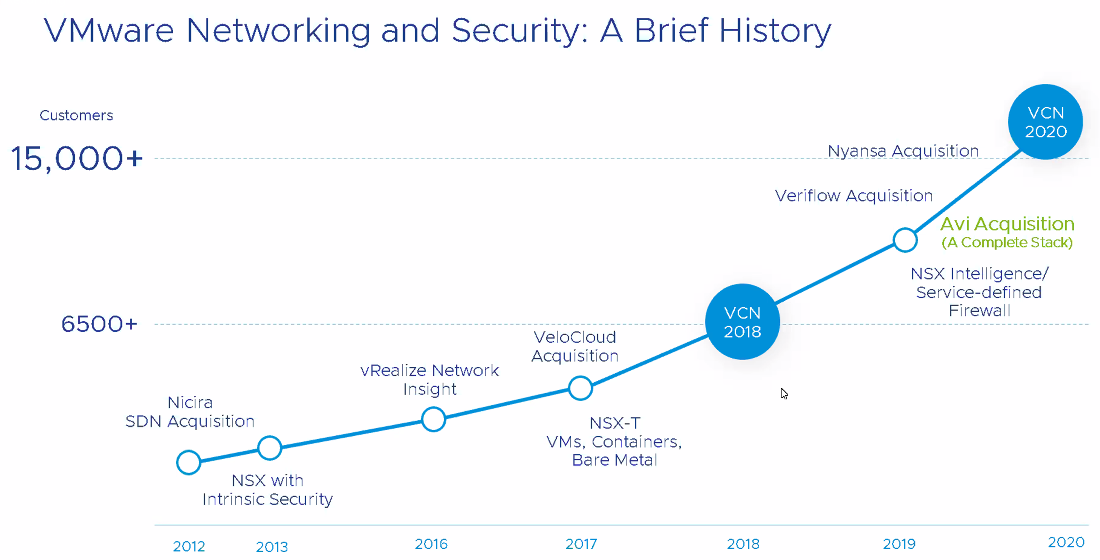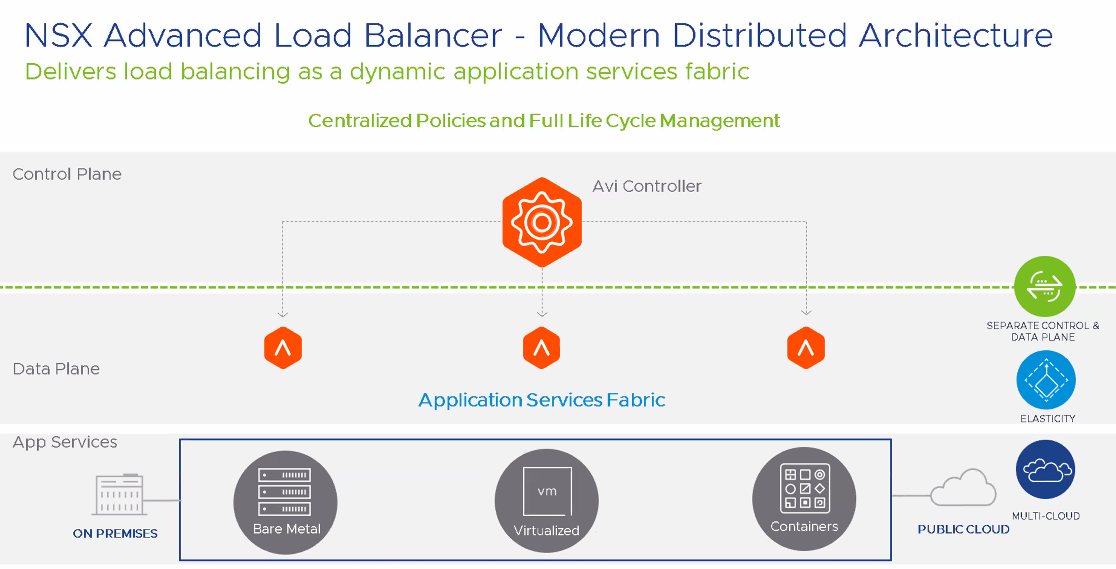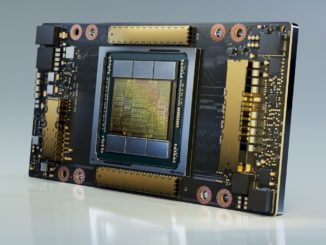
It is easy to understand the lure of the public cloud’s siren call. There’s the flexibility and agility to enable immediate elastic scaling up or down as needed, the tools and services needed for running modern workloads like artificial intelligence and data analytics, the removal of headaches related to deploying and managing vast numbers of systems – enterprises in large part no longer want to run their own datacenter infrastructures – and the cost efficiencies, with no longer having to pay upfront for hardware and instead leveraging models like pay-per-use.
The benefits of the cloud have been put in even greater focus during the COVID-19 pandemic, which has forced businesses to accelerate their digital efforts to adapt to a rapidly evolving business environment where most people are working remotely. In addition, businesses are seeing their revenues and budgets shrink in the wake of the public health crisis, driving many of them to look to the cloud to run more of their workloads. Synergy Research Group noted that in the first quarter, while spending on traditional datacenter hardware and software fell 4 percent year-over-year, revenues in the public cloud datacenter infrastructure market grew 3 percent.
Despite all this, the majority of workloads – some estimates put it at 70 percent – still run in traditional datacenters. There are myriad reasons, from security and compliance concerns to the costs that come with moving some larger applications and data sets to the cloud. While a report by Virtustream – a cloud company owned by Dell Technologies – last year found that organizations were moving more mission-critical applications to the cloud, the belief among most vendors is that for the foreseeable future, most enterprises will continue to run in this hybrid mode, with some workloads remaining on premises in the datacenter and others running in the public cloud, and in most cases in multiple public clouds.
Given that, a growing trend is to make the movement of workloads and data between on-premises and public cloud easier and faster and to bring cloud-like features to the datacenter. Most recently, Hewlett Packard Enterprise is leveraging its GreenLake platform as the foundation for its efforts and Pure Storage rolled out its Purity 6.0 for FlashArray operating system, with a range of features that are available through its Evergreen subscription model. Oracle earlier this month announced Oracle Cloud@Customer, which is a way to bring the full cloud experience into the datacenter.
VMware also has become a significant player in the hybrid cloud space over the past several years and has a goal to make an enterprise’s traditional datacenter or private cloud as flexible, efficient and cost-effective as a public cloud.
“We are helping our customers make their private cloud as agile, as efficient, as flexible as the public cloud infrastructure,” Tom Gillis, senior vice president and general manager of VMware’s Networking and Security Business Unit, said at a recent press briefing. “This is increasingly important because our customers say that if they don’t deliver this level of efficiency, more or more of their internal constituents are going to look to the public cloud. But the public cloud can’t always meet the security requirements and the cost requirements or other concerns, data privacy concerns. Having the ability to make your private cloud infrastructure programmatic and efficient is really critical.”
VMware began its journey beyond its server virtualization roots and into the software-defined datacenter (SDDC) space when it bought software-defined networking (SDN) startup Nicira in 2012 for $1.26 billion, bringing aboard the technology that would form the basis of its NSX networking platform. Over the next several years it would build on the technology with NSX-T, support for virtual machines (VM), containers and bare-metal infrastructures. VMware created its vRealize management suite, bought VeloCloud for software-defined WAN and two years ago launched is Virtual Cloud Network to enable organizations to connect and secure applications and data as workloads moves outside of the datacenter.
A year ago, the company bought startup Avi Networks, whose technology essentially balance workloads and application delivery both in the cloud and in the datacenter. It was the one-year anniversary of that acquisition that brought Gillis and other VMware officials to speak to the media this week about not only the adoption of VMware’s NSX Advanced Load Balancer – based in large part on the technology inherited through the Avi deal – but also new features in the latest version of the product.
“Networking is obviously connectivity that you get from switching and routing, and NSX is known for that. But as we’ve expanded the NSX portfolio – created this family of products – we now have the NSX Services-Defined Firewall and the NSX Advance Load Balancer, which gives you all the necessary services you need to fully define a workload and deploy it with a single-click strategy,” Gillis said. “That’s what motivated the acquisition of Avi. They had built a very unique software architecture. There are other software load balancers on the market, but there is only one software load balancer that has a scale-out architecture, which means you can keep adding little data plans and create one giant logical load balancer. Having that as part of the NSX portfolio has allowed us to really complete this vision of a public cloud experience in your private cloud infrastructure.”
VMware not only is integrating the Avi load balancing technology into its own networking portfolio but also in other products, such as its Carbon Black security offerings, automated orchestration tools and Tanzu Kubernetes platform. Since the Avi acquisition, 7,000 traditional hardware-based load balancers have been replaced with VMware software and the customer base for NSX Advanced Load Balancer has grown about 70 percent, from 6,500 companies to more than 15,000. That includes six of the top 10 financial services companies, Gillis said. In addition, VMware has been able to deliver more than a million transactions per second for a single application.
The software load balancer, which runs on standards x86 servers, can scale horizontally in seconds or minutes using the software load balancer rather than the weeks or months needed for hardware appliances. This becomes even more important given the changes being forced on businesses by the coronavirus outbreak.
“The first thing we needed to do was just react to a global shift that suddenly everybody’s branch office was in their living room,” he said. “We have a number of customers that are ramping up remote access technologies like VDI – virtual desktop infrastructure – so having a load balancing solution specifically designed to solve those use cases has been a real win for us and we’ve been able to help our customers adapt and adjust. The second thing we need to do is stabilize the operation and find some efficiency here. That’s the phase that many customers are in now. COVID, while it presents so many challenges, it also creates opportunity. Smart companies are using this as a time to rethink how we accelerate our digital initiatives and how we can be faster for the future and not be beholden to old legacy infrastructure, and it is infrastructure that requires people to be onsite in buildings. All of those things are things that we’re leaving behind us and that really has created some uplift for the VMware portfolio and the NSX Advanced Load Balancer in particular.”
VMware is putting new features into version 20.1 of NSX Advanced Load Balancer, a platform that includes not only load balancing but also a web application firewall (WAF), application analytics and Kubernetes ingress services in the datacenter and cloud, with the software available for both VMware and non-VMware environments. The new features include enhancements to more easily install global load balancing updates and to offer full integration with Google Cloud Platform and VMware’s NSX-T. Security updates include automated Pulse cloud services and case management, WAF threat feeds, while consolidated VMware solutions with vRealize Orchestrator and vRealize Automation. VMware’s new architecture for consolidated Kubernetes Ingress Services is aimed at streamlining container deployments for multiple clusters and multiple sites.
“The Kubernetes Ingress services, the ability to support modern applications, to have the ability to provide all of those networking services into Kubernetes applications, has been an important part of the product,” said Chandra Sekar, a senior director of marketing at VMware who came to the company with Avi. “Now, the critical piece here is the ability to interact and integrate with a lot of the newer technology stack as well. We’ve always had integrations with vCenter. We have full access integration with NSX-T as well. When the business continuity initiatives started with enterprises that were dealing with the aftermath of COVID, we were able to provide VDI services, with load balancing with VDI services with Horizon [VMware’s desktop and application virtualization product] and we also have several integrations with automation frameworks, including vRealize Orchestrator and vRealize Automation. Everything’s available in one single platform that can be deployed and managed centrally across different environments.”








Be the first to comment